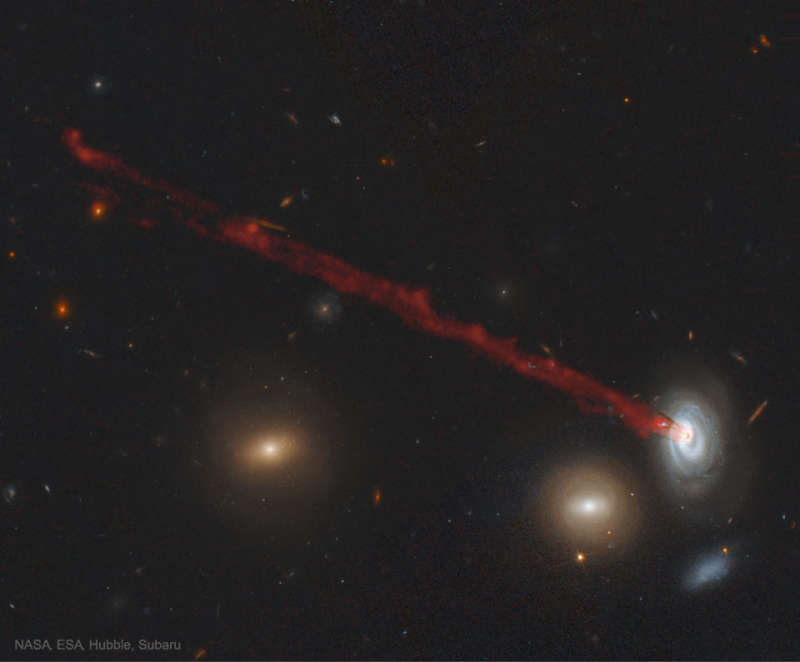Credit & Copyright: NASA,
ESA,
Hubble,
Subaru Telescope,
W. Cramer
(Yale)
et al.,
M. Yagi,
J. DePasquale
Explanation:
Why is there long red streak attached to this galaxy?
The streak is made mostly of
glowing hydrogen
that has been systematically stripped away as
the galaxy moved through the ambient hot gas in a cluster of galaxies.
Specifically, the galaxy is
spiral galaxy D100, and cluster is the
Coma Cluster of galaxies.
The red path connects to the center of D100 because the outer gas,
gravitationally held less strongly, has already been
stripped away by
ram pressure.
The extended gas tail is about 200,000
light-years long, contains about 400,000 times the mass of
our Sun, and stars are forming within it.
Galaxy D99, visible to D100's lower left,
appears red because it glows primarily from the light of
old red stars -- young blue stars can no longer form
because D99 has been
stripped of its star-forming gas.
The featured false-color picture is a
digitally enhanced composite of images from Earth-orbiting
Hubble
and the ground-based
Subaru telescope.
Studying remarkable systems like this bolsters
our understanding of how galaxies evolve in clusters.
1999 2000 2001 2002 2003 2004 2005 2006 2007 2008 2009 2010 2011 2012 2013 2014 2015 2016 2017 2018 2019 2020 2021 2022 2023 2024 2025 |
Yanvar' Fevral' Mart Aprel' Mai Iyun' Iyul' Avgust Sentyabr' Oktyabr' Noyabr' Dekabr' |
NASA Web Site Statements, Warnings, and Disclaimers
NASA Official: Jay Norris. Specific rights apply.
A service of: LHEA at NASA / GSFC
& Michigan Tech. U.
|
Publikacii s klyuchevymi slovami:
spiral galaxy - Coma Cluster - spiral'naya galaktika - Skoplenie galaktik
Publikacii so slovami: spiral galaxy - Coma Cluster - spiral'naya galaktika - Skoplenie galaktik | |
Sm. takzhe:
Vse publikacii na tu zhe temu >> | |
